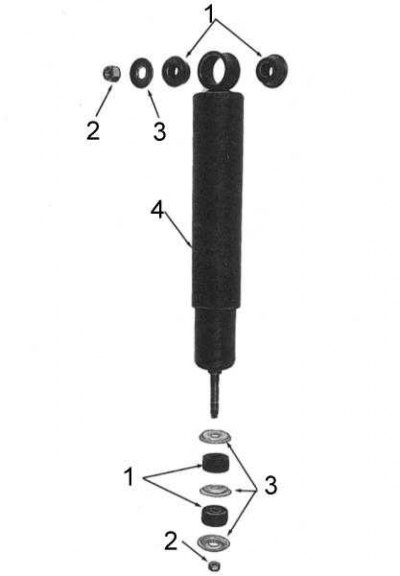Removing
1. Jack up the rear of the vehicle and place it on jack stands under the rear axle housing.
2. Give a nut of fastening of the top end of the shock-absorber to the car chassis. Remove washers and rubber bushings (see accompanying illustration).

1 - rubber bushings; 2 - nut; 3 - washer; 4 - shock absorber
3. Give a nut of fastening of the lower end of the shock-absorber to a basic plate of a spring. Remove washers and rubber bushings.
4. Remove the shock absorber from the vehicle.
Installation
Installation is in the reverse order.
1. Track correctness of installation of rubber plugs and fastener washers.
2. Track correctness of installation of the shock-absorber. The dust muff should be facing down and fitted over the lower end of the shock absorber.
3. Tighten the upper fixing nut with a force of 47÷65 Nm, the lower one - with a force of 17÷23 Nm.
Checking and pumping
Note. Below is a description of shock absorber condition check procedures that do not require special equipment.
1. Inspect the shock absorber body for dents, other damage, and leaks. A defective shock absorber cannot be repaired and must be replaced.
2. Check up a condition of rubber plugs, in case of need make replacement.
3. Clamp the shock absorber vertically in a vise (for the lower support pin).
4. Grasp the upper part of the shock absorber and, by pulling, lift it up to the stop, then slowly lower it down, completely squeezing the shock absorber.
5. Repeat the procedure of the last paragraph six to eight times, completely eliminating the play, determined by the air present in the shock absorber. If the play is not eliminated, the shock absorber must be replaced.